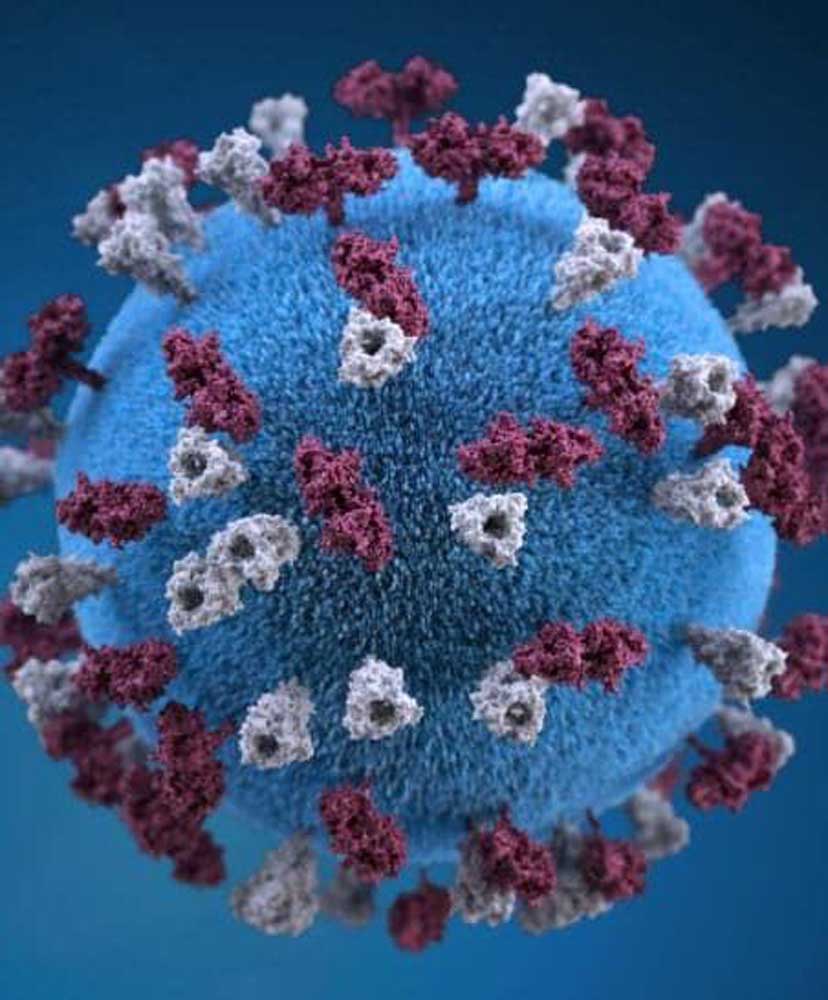Omicron COVID-19 variant found in Oregon
Published 5:00 pm Monday, December 13, 2021

- St. Charles Bend nurses have voted to ratify a new contract with the health system. In this May 2021 file photo, nurses in the St. Charles Bend intensive care unit treat a COVID-19 patient.
The omicron variant of COVID-19 has been confirmed in Oregon, according to the Oregon Health Authority.
Oregon Health & Science University’s laboratory detected the variant Monday in samples from three Multnomah and Washington County residents in their 20s and 30s. All were fully vaccinated and two had traveled internationally, to Canada and Mexico, prior the onset of symptoms.
“We recognize this news is concerning to many people,” said Dr. Dean Sidelinger, health officer and state epidemiologist at the Oregon Health Authority, in a statement released late Monday. “However, if history is our guide, we do know that even if a vaccine doesn’t target a specific variant, the strong immune response you get from being fully vaccinated can still be highly protective against severe disease from all COVID-19 variants.”
Sidelinger said the health authority would continue to monitor the spread of omicron in Oregon with individual-level and community-level variant surveillance.
He stressed that “vaccination remains the best protection against COVID-19 infection and transmission, including most circulating variants.” Other protective measures, including wearing masks indoors and in crowded outdoor settings, physically distancing from others, washing hands regularly and staying home when sick, will also help protect against the spread of COVID-19, he said.
Much of the pandemic focus in recent weeks has been on omicron, the variant discovered Nov. 11 in southern Africa.
The highly mutated variant has since spread to 70 countries. Scientists around the world have no consensus yet on how contagious and virulent the new variant will be. Early studies indicate it is twice as contagious but of similar or lesser virulence.
The United Kingdom announced its first omicron-related death on Monday.
Monday’s news came as Oregon braced for a possible sixth wave of COVID-19 infections as a new spike spreads rapidly across the United States.
Nationwide, new infections are up 43% compared to two weeks ago. Oregon is one of only 10 states that is not reporting an increase in cases compared to two weeks ago.
The Oregon Health Authority on Monday reported a three-day total of 1,387 new COVID-19 cases and 39 new deaths. The report covered Friday, Saturday and Sunday.
The pandemic has claimed over 5.3 million lives around the globe.
The United States just passed 50 million infections and is on pace to surpass 800,000 deaths within the next few days, according to the Johns Hopkins Coronavirus Resource Center. Oregon has had 401,564 cases and 5,420 deaths.
While much attention has been focused on omicron, the current spike in the United States is driven by yet another surge in the delta variant.
Winter cold and gatherings indoors are blamed for high case numbers, with New Hampshire, Rhode Island, Maine and Minnesota all reporting 75 cases or more per 100,000 people.
But the rise in cases is spreading beyond the original outbreaks in the northeast and upper Midwest.
Florida, Texas, California, Missouri and Connecticut reported cases had doubled over the past two weeks.
Infection rates are rising across the country. Oregon is one of just 10 states — all but one west of the Mississippi — that has not reported a rise in cases compared to the past two weeks. But data showing a “flat” growth curve is based on reports from last week.
The Oregon Health & Science University’s weekly forecast, last released Friday, had good news but worries about Oregon’s immediate future in combating COVID-19.
“Case rates returned to pre-Thanksgiving levels, suggesting that Thanksgiving itself did not create a wave of infections,” the report said.
Monday’s OHA report showed 408 COVID-19 patients in Oregon hospitals, down two from Sunday. Hospitals had 106 intensive care unit beds occupied by COVID-19 patients, the same as Sunday.
OHSU forecasts early last month projected hospitalizations to fall under 200 COVID-19 patients per day by Feb. 1. That’s a key benchmark on the state’s rebound from the COVID-19 spike that began in July and peaked at just under 1,200 COVID-19 patients in hospitals each day at the beginning of September.
The current forecast delays reaching the 200-patient mark to Feb. 26. Hospitalizations aren’t expected to reach pre-July levels until the end of March.
But forecasting the future path of COVID-19 in Oregon could be upended now that omicron has arrived. “Oregon should expect a wave of omicron infections in coming months,” the report said. “The variant appears to spread much more easily than previous forms of the coronavirus.”
Public health officials need to prepare for a worst case scenario, particularly the availability of hospital beds and intensive care unit spots.
“If the disease is severe, the impacts are enormous,” the report said. “But there are signals it may be more mild.”
Booster shots are now approved for everyone over age 16 and many health officials believe being “fully vaccinated” now means having received the third shot of Moderna or Pfizer vaccine, or second shot for those who originally were inoculated with the Johnson & Johnson single-shot vaccine.
OHSU said the ability of omicron to get through current vaccines is showing mixed evidence.
“Booster shots appear helpful, but the vaccinated population is also at risk of infection,” the report said.
A new OHSU forecast is due Thursday evening.
While concerned about “fatigue” over COVID-19 safeguards, such as wearing masks indoors in public settings and continued social distancing, there is a key indicator that safeguards are working.
Similar to last year, OHSU reported dramatically lower incidence of flu compared to 2019.
Fourteen cases were reported so far this year, compared with 304 in a similar week two years ago. The OHSU researchers believe the safeguards in place for COVID-19, particularly widespread masking, have suppressed the flu.
One longer term measure indicates the state is trending down. The County COVID-19 Community Transmission report looks at infections and positive test results over a rolling four-week period.
The latest report, issued Monday, shows the number of cases per 100,000 people has fallen to 116.9, while the positive test rate is 5%.
The Institute for Health Metrics and Evaluation at the University of Washington, a major COVID-19 forecaster used by federal and state agencies, is projecting the United States will most likely have 880,678 reported COVID-19 deaths by March 1, 2022. It projects Oregon will most likely have 6,434 deaths at that point.
The nonprofit Covid Act Now that has monitored infection and vaccination rates throughout the pandemic, rates Oregon as “High” for risk, the mid-point of its five tiered scale.
Jefferson, Yamhill, Umatilla, Malheur and Marion counties are rated as having high vulnerability, which takes into account vaccination and natural exposure rates.
Deschutes County is the only large county rated “very low” for vulnerability.








